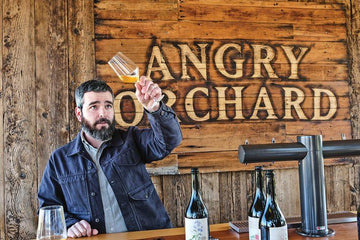
The history and origin of Coors Light:
The Coors brewing tradition began in 1873 when German immigrants Adolph Coors and Jacob Schueler founded the Golden Brewery in Golden, Colorado. They initially brewed a lager beer that was well-received by the local population. Over the years, the brewery grew steadily and became known for its high-quality beer. One of the most significant moments in Coors' history was when Prohibition hit the United States in the 1920s. Unlike many other breweries that went out of business during this period, Coors managed to survive by pivoting to other products, such as malted milk and near beer, a non-alcoholic beverage. This allowed them to keep their doors open and their brewing expertise intact. After Prohibition was repealed in 1933, Coors returned to brewing traditional beer, and their brand slowly regained its popularity. However, it was during the 1970s that Coors Light, their iconic light beer, came into the spotlight.
Coors Light was introduced in 1978, in response to the growing demand for lighter, crisper beers in the United States. It was a risky move for the company, but it paid off. Coors Light's unique selling point was its innovative "Cold Certified" label, which turned the mountains on the can blue when the beer reached the optimal serving temperature. This innovation captured the imagination of consumers and added to the brand's identity.
The marketing campaign for Coors Light emphasized its refreshing, light taste, and the beer's association with the Rocky Mountains. The slogan "The Silver Bullet" became synonymous with the brand, symbolizing the beer's chill and purity.
Coors Light's popularity continued to grow, and by the 1990s, it had become one of the best-selling beers in the United States. The company's commitment to quality, combined with innovative marketing strategies, helped it become a staple at bars, parties, and sporting events across the country.
Coors Light has evolved over the years, introducing various product extensions and limited-edition releases to keep up with changing consumer preferences. The brand has also made efforts to be more environmentally conscious by implementing sustainable practices in their brewing and packaging processes.
Today, Coors Light remains a prominent player in the American beer market. Its enduring success can be attributed to a blend of tradition, innovation, and a deep commitment to providing consumers with a crisp, refreshing beer that stands out in a crowded marketplace. The story of Coors Light is one of adaptation and staying true to their core values, ensuring that they continue to be a beloved choice for beer enthusiasts across the nation.
Reason why Coors Light appear on T-shirts:
Coors Light, like many other popular beer brands, often appears on t-shirts and other merchandise for several reasons:
-
Brand Promotion: Beer companies use merchandise like t-shirts as a marketing tool to promote their brand. When people wear t-shirts with a beer brand's logo, it serves as free advertising for the company. It's a way to increase brand visibility and awareness, which can lead to increased sales.
-
Fashion and Style: Beer brand t-shirts have become a part of pop culture and fashion. They're often seen as cool and retro, and people wear them as a style statement. The logo and design elements of beer t-shirts can sometimes be seen as trendy or iconic.
-
Collectibles: Some collectors like to accumulate merchandise related to their favorite beer brands, including t-shirts. Collecting beer-related items, such as t-shirts, can be a hobby, and it allows enthusiasts to have a physical connection to the brand.
-
Giveaways and Promotions: Beer companies frequently use promotional events, contests, or giveaways to distribute branded merchandise, including t-shirts. This can create excitement around the brand and encourage consumer engagement.
- Bar and Pub Culture: Many bars, pubs, and restaurants that serve Coors Light and other beers have branded merchandise available for purchase. Customers may buy t-shirts as a way to commemorate their visits to these establishments.
In the case of Coors Light, the brand's logo and imagery, such as the Silver Bullet and the Rocky Mountains, have become recognizable symbols associated with the beer. These symbols are often used in the design of Coors Light t-shirts, making them appealing to those who enjoy the beer and want to display their affinity for the brand.
Benefit of Shirt:
Wearing a Coors Light shirt, like any other branded clothing, can offer several benefits depending on individual preferences and situations:
-
Brand Loyalty: If you're a fan of Coors Light, wearing a shirt with their logo or branding can be a way to express your loyalty and affinity for the brand. It's a simple way to show that you enjoy their products.
-
Conversation Starter: Branded clothing can often serve as a conversation starter. If you're at a social gathering or event, fellow beer enthusiasts or Coors Light fans might strike up a conversation based on your shirt, leading to enjoyable interactions.
-
Comfort: T-shirts are generally comfortable and versatile clothing items suitable for various occasions, including casual outings, sports events, and lounging at home.
-
Style and Fashion: Some people wear branded clothing for its style and aesthetic appeal. Coors Light shirts may be seen as fashionable or retro, and wearing one can be a fashion statement, especially if you like the design or imagery on the shirt.
- Gifts: Coors Light shirts can be gifted to friends or family who enjoy the brand, making them a thoughtful and personalized gift option.
Ultimately, the benefits of wearing a Coors Light shirt are subjective and depend on individual preferences and circumstances. Whether it's to express loyalty, engage in conversations, or simply enjoy the comfort and style, branded shirts like these can have various positive aspects.



